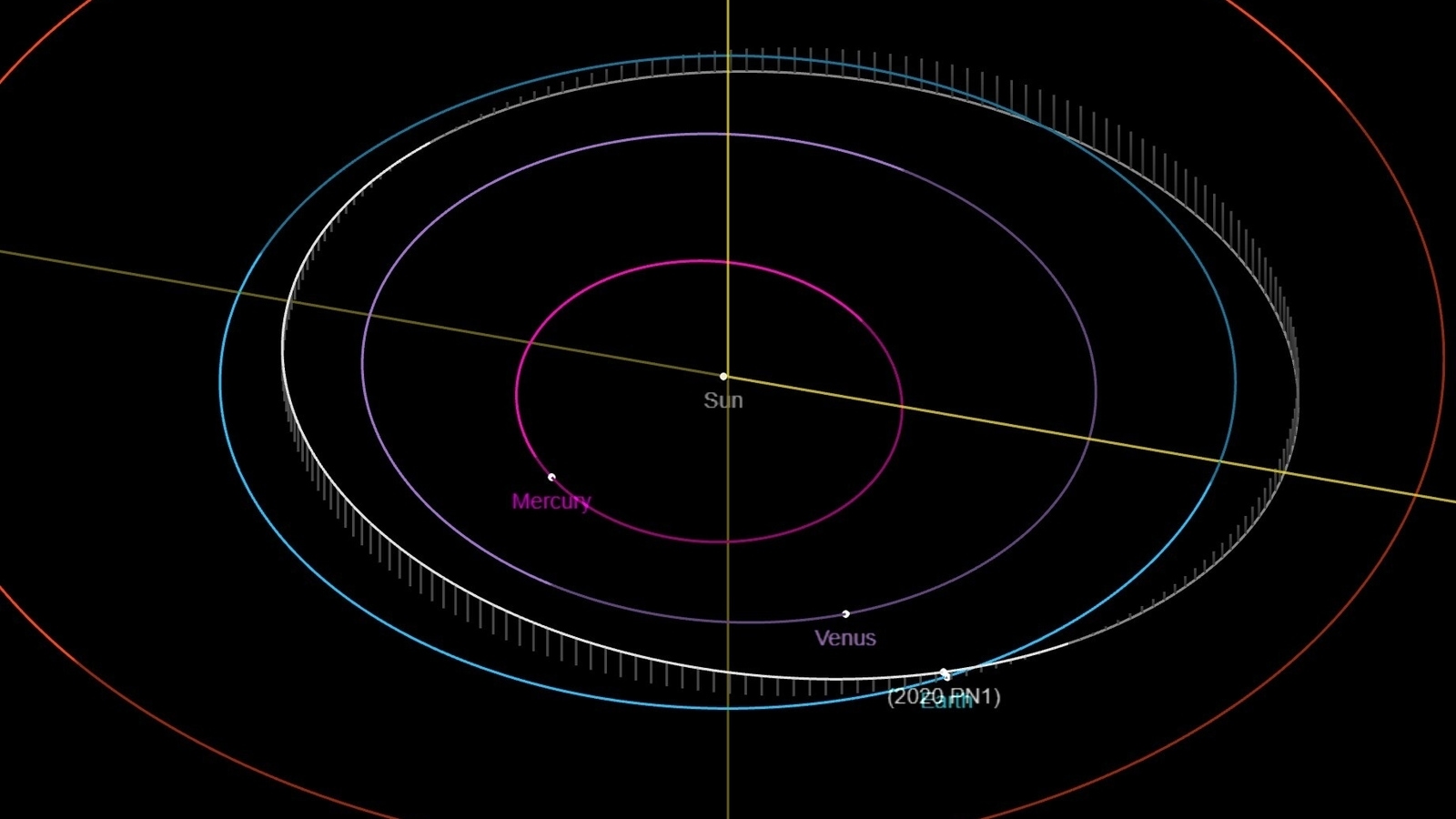
If asteroids are located millions of kilometers away in space, then why do we need to track them? According to the National Aeronautics and Space Administration (NASA), asteroids, which are ancient space rocks, present a potential threat of collision with Earth and they can help discover secrets of space that have been hidden from us. While most of them are located in the main asteroid belt between the orbits of Mars and Jupiter, they often make close approaches to Earth, passing the planet at close distances.
This can happen if an asteroid gets knocked off course, affected by a large planet's gravitational pull. Their orbits can also bring them extremely close to Earth, making it imperative to study and track them.
NASA has now tracked an asteroid whose orbit will bring it close to Earth today, August 3. Know details of this close encounter.
Asteroid 2020 PN1
NASA keeps an eye on asteroids, comets, and other Near-Earth Objects (NEOs) for potential close approaches that could threaten Earth. The space agency has issued a warning against an asteroid that will come extremely close to Earth today, August 3. As per the details, the asteroid, given the designation Asteroid 2020 PN1, will pass Earth at as close as approximately 4.1 million kilometers. While this asteroid is not a planet killer, it is still huge, with an estimated width of 90 feet. That makes it almost as big as an aircraft!
Not only will the asteroid pass Earth very closely, but it is also hurtling towards us at blistering speed. NASA has revealed that Asteroid 2020 PN1 is approaching Earth at a breakneck velocity of 17425 kilometers per hour.
Other details
It belongs to the Apollo group of Near-Earth Asteroids, which are Earth-crossing space rocks with semi-major axes larger than Earth's. These asteroids are named after the humongous 1862 Apollo asteroid, discovered by German astronomer Karl Reinmuth in the 1930s.
How you can help NASA track asteroids
If you're a budding astronomer and want to be an asteroid hunter, you can help NASA discover and track asteroids in space! NASA's new Daily Minor Planet Project allows astronomers and skywatchers to help discover new asteroids and track them in data sets. To capture asteroids, the Daily Minor Project uses the NASA-funded, University of Arizona-based Catalina Sky Survey which captures nearly 1000 images every night. Due to this volume, NASA scientists fall short of personnel to study these images.
According to NASA, “You'll decide if the specks of light in the images look like genuine celestial bodies or, instead, are false detections resulting from inconveniently timed "twinkles" of the star-studded background.” After looking at the image, you just have to click on a yes or a no button and add a comment if necessary, before moving on to the next shot.
https://news.google.com/rss/articles/CBMikwFodHRwczovL3RlY2guaGluZHVzdGFudGltZXMuY29tL3RlY2gvbmV3cy9hc3Rlcm9pZC0yMDIwLXBuMXMtb3JiaXQtd2lsbC1icmluZy1pdC1jbG9zZS10by1lYXJ0aC10b2RheS1jbG9zZS1lbmNvdW50ZXItaW4tb2ZmaW5nLTcxNjkxMDM2MzM5MzczLmh0bWzSAZcBaHR0cHM6Ly90ZWNoLmhpbmR1c3RhbnRpbWVzLmNvbS9hbXAvdGVjaC9uZXdzL2FzdGVyb2lkLTIwMjAtcG4xcy1vcmJpdC13aWxsLWJyaW5nLWl0LWNsb3NlLXRvLWVhcnRoLXRvZGF5LWNsb3NlLWVuY291bnRlci1pbi1vZmZpbmctNzE2OTEwMzYzMzkzNzMuaHRtbA?oc=5
2023-08-03 04:21:59Z
2282865172
Tidak ada komentar:
Posting Komentar